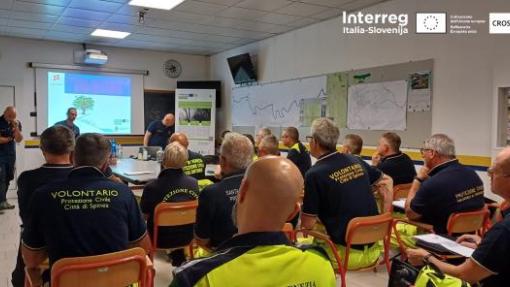Within the framework of the European project "Cross Alert" Interreg VI-A Italy-Slovenia 2021-2027, at the end of June in San Stino di Livenza, 25 volunteers belonging to metropolitan civil protection organizations participated in an experimental course on risks and emergency management related to hydraulic and hydrogeological hazards, interventions on embankments, and volunteer safety.
Numerous topics were covered, including: weather bulletins, types of alerts, prevention activities, design and management of a chain of motor pumps, use of personal protective equipment (PPE), risk of falling into water, and the construction of a coronella and a saccata.
Koronela: It is a technique or temporary structure used to reinforce or repair embankments in the event of a hydraulic emergency. It often involves placing a kind of "crown" (hence the name) made of sandbags or similar materials along the top or sides of the embankment to prevent cracking or overtopping.
Saccata: Refers to the construction of a barrier made of sandbags, used to retain or divert water in case of flooding. A "saccata" is thus a type of stacked sandbags forming a temporary wall against the water.
The main objective of the Metropolitan City of Venice’s participation in the project concerns crisis management caused by extreme climatic events. Among the planned initiatives, the Metropolitan City of Venice intends to develop software for managing civil protection volunteer teams, particularly for hydraulic risk emergencies, connected to existing databases and based on similar systems already in use. Furthermore, a system will be implemented for organizing first responders, which includes the computerization of the activation of procedures for searching missing persons by the competent authorities, aided by GPS radios, and the training of volunteer first responders, to which the course is also related.

